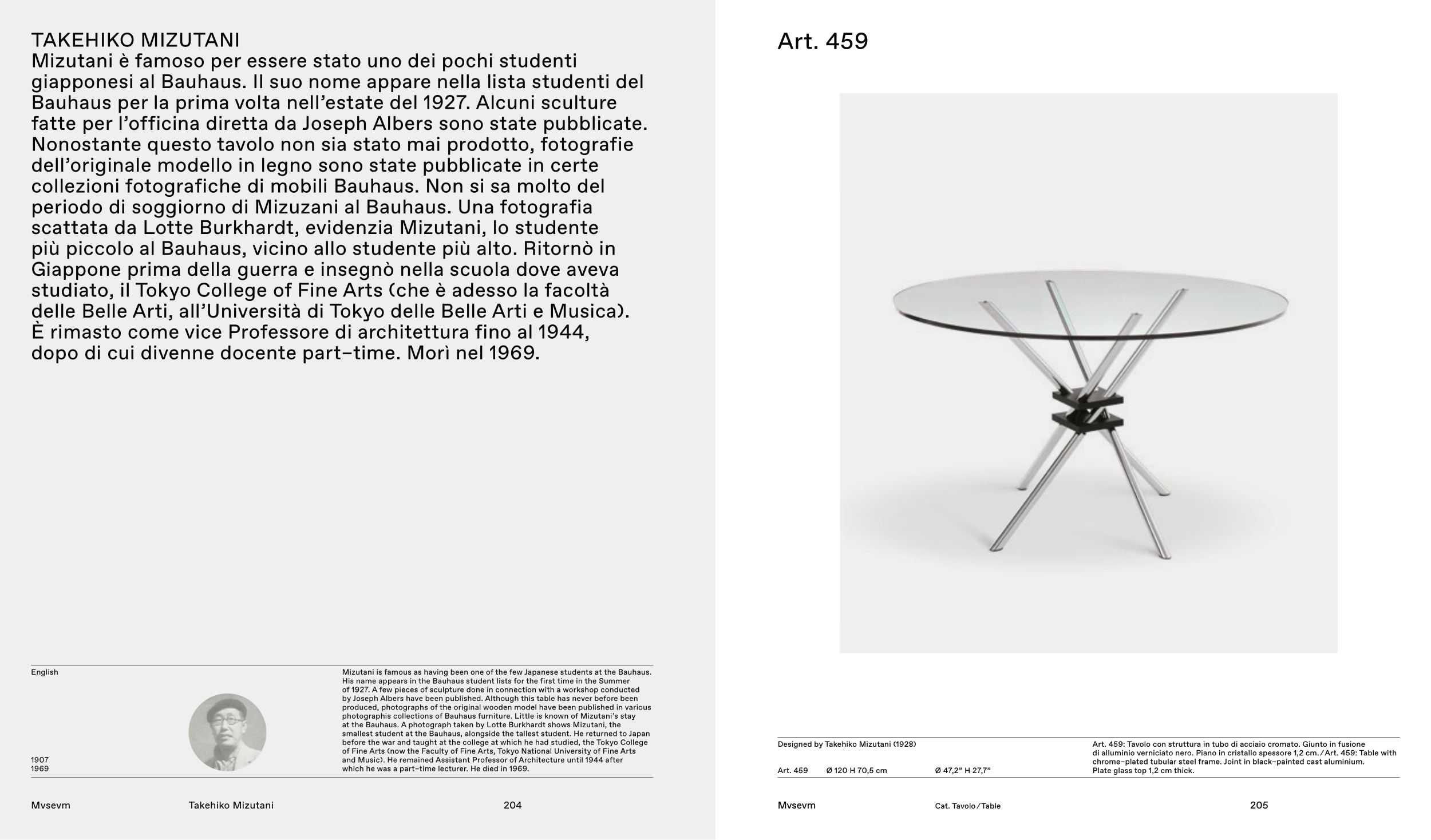204
205
Art. 459
Designed by Takehiko Mizutani (1928)
Art. 459
Ø 120 H 70,5 cm
Ø 47,2” H 27,7”
Art. 459: Tavolo con struttura in tubo di acciaio cromato. Giunto in fusione
di alluminio verniciato nero. Piano in cristallo spessore 1,2 cm. ⁄ Art. 459: Table with
chrome–plated tubular steel frame. Joint in black–painted cast aluminium.
Plate glass top 1,2 cm thick.
Mvsevm
Cat. Tavolo ⁄ Table
Mvsevm
Takehiko Mizutani
Mizutani is famous as having been one of the few Japanese students at the Bauhaus.
His name appears in the Bauhaus student lists for the first time in the Summer
of 1927. A few pieces of sculpture done in connection with a workshop conducted
by Joseph Albers have been published. Although this table has never before been
produced, photographs of the original wooden model have been published in various
photographis collections of Bauhaus furniture. Little is known of Mizutani’s stay
at the Bauhaus. A photograph taken by Lotte Burkhardt shows Mizutani, the
smallest student at the Bauhaus, alongside the tallest student. He returned to Japan
before the war and taught at the college at which he had studied, the Tokyo College
of Fine Arts (now the Faculty of Fine Arts, Tokyo National University of Fine Arts
and Music). He remained Assistant Professor of Architecture until 1944 after
which he was a part–time lecturer. He died in 1969.
1907
1969
English
TAKEHIKO MIZUTANI
Mizutani è famoso per essere stato uno dei pochi studenti
giapponesi al Bauhaus. Il suo nome appare nella lista studenti del
Bauhaus per la prima volta nell’estate del 1927. Alcuni sculture
fatte per l’officina diretta da Joseph Albers sono state pubblicate.
Nonostante questo tavolo non sia stato mai prodotto, fotografie
dell’originale modello in legno sono state pubblicate in certe
collezioni fotografiche di mobili Bauhaus. Non si sa molto del
periodo di soggiorno di Mizuzani al Bauhaus. Una fotografia
scattata da Lotte Burkhardt, evidenzia Mizutani, lo studente
più piccolo al Bauhaus, vicino allo studente più alto. Ritornò in
Giappone prima della guerra e insegnò nella scuola dove aveva
studiato, il Tokyo College of Fine Arts (che è adesso la facoltà
delle Belle Arti, all’Università di Tokyo delle Belle Arti e Musica).
È rimasto come vice Professore di architettura fino al 1944,
dopo di cui divenne docente part–time. Morì nel 1969.


